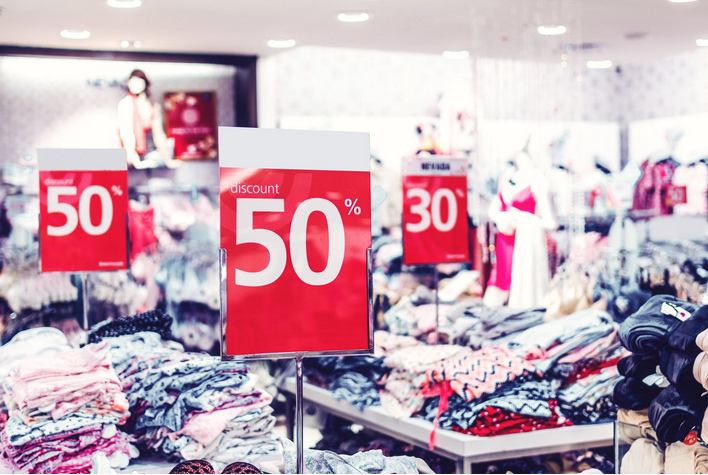Because generational purchase behaviour varies, marketers have to constantly and proactively evaluate the best ways to communicate with their customers to effectively boost sales.

As we reel from the impact of the coronavirus, lockdowns, and travel restrictions on our businesses, we’re all wondering what we can do to bounce back as soon as possible.
How can we increase sales to make up for the losses incurred during the lockdown? How do we get our sales back on track in a market where customers have had to dig into their savings to weather the coronavirus storm?
One back-to-basics way is to really focus on understanding your customers.
- What matters to them?
- What are their priorities when it comes to shopping or interacting with brands?
- What kind of marketing message is most effective?
- What should you emphasise?
- What are the best channels to connect with customers of all age groups?
In other words, every business has to think about how to effectively reach and communicate with customers—and have a solid grasp of generational purchase behaviour. After all, everything from expectations through to technological capabilities, preferences, research and buying habits differs by age group.
These are trying times for everyone – small and large businesses alike – but understanding how people shop can help your business get back on its feet as soon as possible.
There’s extra focus on Generation Z, as they’re poised to be the largest cohort of consumers to date.

How Each Generation Shops: Shopping Personas to Know
It’s really simple: The business that goes the extra mile in understanding its customers – and then adapts to cater to them – is the one that has an advantage.
This post aims to give you the necessary insight as to how different consumer generations shop. Of course, cultural factors or considerations must also be taken into account, so it can’t be a sweeping, straight-across-the-board assessment of all generations in all countries.
Note:
The repercussions SARS-Cov-2 / COVID-19 has had across all industries plus the widespread sentiment of fear will certainly impact attitudes, priorities, perspectives, and of course purchase behaviour in the coming months and perhaps even years. It’s just hard to say to what extent and how far reaching – or long – such behavioural changes would last.
Baby boomer shoppers
- Baby boomers are perhaps the most ‘traditional’ of consumers.
- As they enter retirement, they start to spend less.
- They prefer to shop with brands that offer wide selections at discounted prices.
- Baby boomers aren’t particularly driven by loyalty programs or unique brand experiences – variety and well-priced products that meet their immediate needs is more important.
Generation X shoppers
- Gen Xers have already established their careers and acquired savings over the years, which makes them more financially powerful than ever.
- They are most likely to be influenced by price over other factors – in other words they are always on the hunt for good deals.
- Out of all the generations, Gen Xers are least likely to care about brand loyalty.
- Xers expect a convenient path to purchase.
Generation Y (Millennials) shoppers
- Millennials are at a stage in their lives where they’re building up their careers and families.
- This generation now has much more spending power compared to just a few years ago, when many Yers were still just entering the workforce.
- Millennials like to shop online.
- They tend to stick to the companies they know and trust, which makes them the generation most loyal to brands.
- This generation is the most open to marketing messages provided that those messages are personalized, brands ‘walk the talk’, and their loyalty is rewarded.
Generation Z shoppers
- Zers are the youngest cohort of shoppers.
- With many still reliant on pocket money or having just joined the workforce, this generation of shoppers is price-conscious and focused on saving money.
- Price determines where they choose to shop.
- This price orientation makes them less loyal to brands.
- Their loyalty is reserved for brands that reflect their values and that they feel understand them.
- Zers are proactive about saving money, which means they want to maximize the value of every dollar spent.
- As such, they care greatly about the quality.
- This generation of shoppers is constantly connected and won’t make a purchase without first reading reviews to guide their choices.
- Generation Z use search engines and social networks to research and social media and other personal networks to help them with their decision making.
- In other words they access and evaluate a wide range of information before making a purchase.
- Generation Z prefers shopping in-store (brick-and-mortar) over online shopping.
- Wherever they shop, they expect their user experience to be high quality, eye-catching, authentic, and simple.
- They expect brands to understand their needs and prefer brands that help them ‘craft their identities’.
- For this young group of shoppers, consumption isn’t always about possession – it’s also about access, an expression of their identity, and tied to their ethical views.
- Zers under the age of 21 don’t use phone or e-mail customer service channels – they turn to social networks for immediate assistance.

Generational Purchase Behaviour Statistics
Knowing generational purchase behaviour isn’t enough. You also need to understand their preferences to guide your marketing decisions.
So here are some generational purchase behaviour statistics worth keeping in mind.
Note:
Some differences in generational purchase behaviour come down to life stage and income. For example: a single, 25 year old professional has different needs and priorities than a 65 year old, retired senior citizen and grandparent.
General / Overlapping Buying Behaviour
- When it comes to researching a product / service before making a purchase, consumers view physical stores and a brand’s website as equally important – that’s regardless of consumer generation!
- Consumers in all age groups say that a brand’s e-commerce site is just as important as its in-store offering.
- Millennials and Gen Zers are the most likely to have made a purchase on Amazon in the past month at 79% vs 69% respectively.
You might also want to read:
» When to hire a professional copywriter
» Is there an ideal product description length?
Baby Boomers Buying Behaviour
What are the factors that drive brand loyalty among Baby boomers?
- Price: 62%
- Convenience: 30%
- Product variety: 21%
What influenced their most recent purchase?
- 36% say that convenience influenced their most recent purchases.
- 25% chose whether a product meets their immediate needs.
How does this generation view itself as shoppers?
- 50% call themselves price-savvy shoppers.
- Compared to other generations, Baby boomers care least about quality with only 16% saying they are “quality first” shoppers.
What are Baby boomers like as gift-givers?
- Only 12% are likely to buy gifts for others around the holidays.
- If they do look for gifts, 33% primarily look for bargains.
What’s the best way to reach Baby boomers?
- They prefer direct mail more than any other generation (59%).
- 59% also say they value e-mail.
- Only 19% chose social.
Gen X Buying Behaviour
What matters most to Gen X shoppers?
- Price: 55%
- Product quality: 45%
- Convenience: 23%
What influenced Xers’ most recent purchase?
- Discounts: 85%
- Product quality: 45%
How does this generation view itself as shoppers?
- 44% say they are price-savvy (like Baby boomers).
- 25% say they are quality-oriented (like Gen Z and Gen Y).
What are Xers like as gift-givers?
- 36% are most likely to be bargain hunters.
- ¼ say they look for unique gifts for their loved ones.
What’s the best way to reach Generation X?
- 59% chose e-mail as the most valued channel.
- They are less interested in other digital channels.

Gen Y’s (Millennials) Buying Behaviour
What drives Gen Y’s loyalty to brands?
- Loyalty programs / rewards: 27% (that’s more than other generations)
- Company reputation or philosophy: 15%
What influenced Generation Y’s most recent purchase?
- 15% said points / loyalty rewards influenced their most recent purchase.
How would Millennials describe themselves as shoppers?
- Quality-first: 34%
- Price: 34%
What are Millennials like as gift-givers?
- Millennials view themselves as “thoughtful” gift-givers.
- 38% take the time to find unique gifts for their loved ones (family and friends).
What are the best channels to reach Gen Y?
- E-mail: 67%
- Mobile apps: 61%
- Social media: 50%
Gen Z’s Buying Behaviour
How does Gen Z pick the brands they buy from?
- Price: 60% – 72% (depending on the study)
- Shared values: 18%
- Social media presence: 91%
- Friends’ influence: 7%
- Other: 6%
What other factors do Zers consider when choosing which companies / brands to purchase from?
- 70% try to purchase products from companies they consider ethical.
- Approximately 65% try to learn where a product they buy (or plan to buy) is made, what it’s made from, and how it’s made.
- Circa 80% of Zers refuse to purchase anything from companies involved in scandals.
- It’s important to note that 80% actually state that they remember at least one scandal / controversy involving a company.
- 63% of Gen Z consumers said that recommendations from friends are their most trusted source for learning about products and brands.
What influenced their most recent purchase decisions?
- According to Yes Marketing, ½ of Gen Z based their last purchase decision on product quality. That’s more than any other generation.
How does Generation Z view themselves as shoppers?
- 28% describe themselves as quality-first shoppers.
What contributes to Zers loyalty to a brand?
- 57% say quality is more important than any other factor.
- 55% choose price.
What are Zers purchase habits?
- Over 32% of Gen Z transactions happen on a mobile device.
- 41% read at least 5 online reviews before making a purchase.
What are this generation’s in-store shopping preferences?
- When they have time, 80% of Zers look forward to shopping in physical stores.
- 71% enjoy in-store shopping, so that they can understand what’s in style.
- 80% like trying new retail stores.
- 67% of Gen Z use their phones to research what they are thinking about buying while in-store.
- 65% say they don’t like to buy new things unless they can touch them.
- The following factors motivate in-store visits:
- Store design
- Unique merchandise
- Better ways to try products
- Displays that show product use
- 34% of Gen Z tends to conduct research online and then buy in-store.
What about Gen Z’s online shopping preferences?
- 75% prefer to do as much of their shopping (as possible) online.
- 51% compare products within a site.
- 30% regularly visit multiple websites.
- 28% often put items in the shopping cart without purchasing right away.
- 38% find it difficult to find what they need or love online.
- 35% don’t feel comfortable making purchases online.
TIP: Keep in mind that many Gen Zers don’t have their own credit cards yet. This could be why – as of now – they prefer in-store visits and shopping.
What else should you know about Gen Z?
- 82% say that social responsibility is a very important or an important characteristic of their favourite brands.
- When it comes to gift-giving, rather than convenience or searching for bargains, 35% of Zers prefer to find customized gifts.
- Compared to all other generation, Gen Z is the least likely to value e-mail.
- 76% say that they want brands to respond to feedback – in fact, this is a key factor in determining just how authentic a brand is.

Key Takeaways: What Marketers Can Do
Taking all this generational purchase behaviour information into account, here are just a few marketing takeaways small businesses can use to stimulate shopping and boost sales for each consumer generation.
General takeaways:
- Ensure that product information is accurate and consistent with what was promoted on other channels like e-mail or social.
- Be logical about the timing of your e-mails. Consider that there is a greater tendency to check e-mail in the morning before work and in the late afternoon or evening after work. Don’t forget to capture the older generation’s attention and keep them coming back for more with always-relevant content.
- Pay special attention to the type of content you’re sending out during the holidays. Keep this in mind:
- Preferred holiday content:
- Top 10 lists: 23%
- Gift guides: 25%
- Customer reviews: 50%
- Experts recommendations: 15%
- Educational product based: 6%
- None of the above: 23%
- This is what each generational cohort prefers:
- 65% of Millennials want customer reviews within e-mails.
- 41% of Gen Zers want top 10 lists.
- Both want personalized recommendations at 36% and 33% respectively.
- Preferred holiday content:
If you’re targeting Gen Xers:
- Since Gen Xers’ preferred channel of communication is e-mail, consider bolstering your e-mail marketing / newsletter initiatives.
- Price and quality matter greatly to this generation, which is why marketers might see improved sales performance by highlighting value.
- They’re the least likely to be loyal to brands, so you will want to find creative ways to keep Gen X consumers coming back for more.
You might also want to read:
» E-mail marketing: tips for creating newsletters that get read
» The best ways to build an e-mail list
» Great examples of newsletter sign-up copy
If you’re targeting Millennials:
- Since Millennials spend a lot of time online on different channels, and have a preference for companies they know and trust, it makes sense to invest in content marketing.
- Millennials have incredibly high standards for customer service, so make sure you’re offering the best customer service possible.
You might also want to read:
» Business blogging: how your small business benefits
» Business blog content strategy – where to start
» Write content for readers and search engines – tips for small businesses
If you’re targeting Gen Zers:
- Zers prefer to shop in-store, so use digital resources to drive in-store traffic. In other words, use your online channels to encourage Gen Z shoppers to visit brick-and-mortar stores.
- Since they spend a tremendous amount of time online (with a preference for Youtube, Instagram, and Snapchat), consider connecting and working with their favourite (and relevant) influencers.
- You might also want to be proactive about trying out emerging content formats.
- This generation’s attraction to purpose-driven brands means that marketing messages that appeals to their “appetite for purpose” could yield better results.
For more on generational purchase behaviour – with a focus on Millennials and Gen Z – take a look at these pages:
» Gen Z Statistics: Must Know Facts and Figures
» Gen Z vs Millennials: Are They the Same?
» Copywriting for a Millennial audience
Sources: